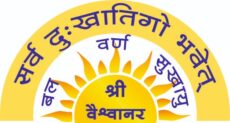Ayurveda is an ancient healing system. It had originated almost 5000 years ago & the roots are tracked back in India.
The word “Ayurveda” is a combination of two words: “Ayu” + “Veda”. “Ayu” means Life, and “Veda” means science – hence the term “Ayurveda” means the Science of Life. As per the Ayurveda, the deeper meaning of “Ayu” is union of physical body, senses, mind, and the spirit. Ayurveda is a holistic science as it concerns with your whole body, mind, and the spirit.
Ayurveda profoundly focuses on every aspect of your life, and not only on your diseased condition alone. Ayurveda treats a person as a whole. Ayurveda teaches us the way of aligning our body with nature. Ayurveda describes ideal daily routine, seasonal regimens, code of conducts, dietic, etc. for the maintenance of health as well as happy and healthy life.

Ayurveda considers every human being is composed of five basic elements & three Doshas. They’re as follow,
Elements- Space, Air, Fire, Water, and Earth.
Doshas – Vata, Pitta, and Kapha.
Below Sholka (verse) is from the book Charak Samhita (The classical textbook of Ayurveda). It defines Ayurveda as,
Language: Devnagari (Sanskrit)
हिताहितं सुखं दुःखमायुस्तस्य हिताहितम्|
मानं च तच्च यत्रोक्तमायुर्वेदः स उच्यते||४१||
Language: Diacritical (English)
hitāhitaṁ sukhaṁ duḥkhamāyustasya hitāhitam|
mānaṁ ca tacca yatrōktamāyurvēdaḥ sa ucyatē||
Translation: The knowledge of happy, unhappy, healthy, and unhealthy state of life is an Ayurveda. Ayurveda explains what is appropriate and inappropriate in relation to the life, as well as it measures life expectancy and the quality of life.
The 2 aims of Ayurveda are:
1) The preventive aspect – Maintain the health of a healthy.
2) The curative aspect – Heal the disease of diseased.

Great, well written article!
Thanks for your blog, nice to read. Do not stop.
Pingback: Ayurvedic Spring Cleanse: Reset, Renew, and Rebalance at Home - doctordrashti.com